Did you know that there are many different types of palm trees? It may be obvious to some, especially if you’ve spent time in different countries around the world. Most of us, though, grow up in places without many palm trees. We only see them in movies or when we finally make it to California on vacation.
There are, however, many different kinds of palm trees native to a variety of countries and areas across the globe. Some are tall and skinny, others are short and stout.
Over the centuries, palm trees have evolved in ways that allow them to grow and thrive in water-starved climates. These beautiful trees evoke a tropical feel that many people associate with vacation, relaxing evenings, and beautiful sunrises.
Depending on where you live, buying or growing palm trees for your property can be a fantastic choice! They are relatively easy to maintain, and they provide a great deal of natural shade for cars, houses, and commercial buildings.
Table of Contents
The Palm Tree Basics

Palm trees belong to the Arecaceae family of trees. There are, and this might surprise you, over 2,600 palm tree species.
Differences in height, shape, leaf length, and other factors help separate different species of palm trees. They are grown for shade, aesthetics, and as an agricultural crop.
Usually, palm trees are a hallmark of warmer climates and high temperatures. There are, though, some palm trees that grow where things are cold.
We can’t cover thousands of different palm trees here, so we’re sticking to some of the most popular types of palm trees out there. Here are some of the most common palm trees you’ll see whether it’s in a fancy hotel entrance or out in the wild near the ocean.
The Canary Palm Tree

These palm trees are amazing. They have lush leaves on top of tall trunks that make them one of the most desirable types of palm trees available.
They can grow to over 60 feet tall, and produce dates that you can eat as a treat or put into a variety of desserts. People love this type of palm tree for its dense display of pinnate leaves. It almost looks like fireworks exploding when you have several of them together.
Palmetto Palm Trees
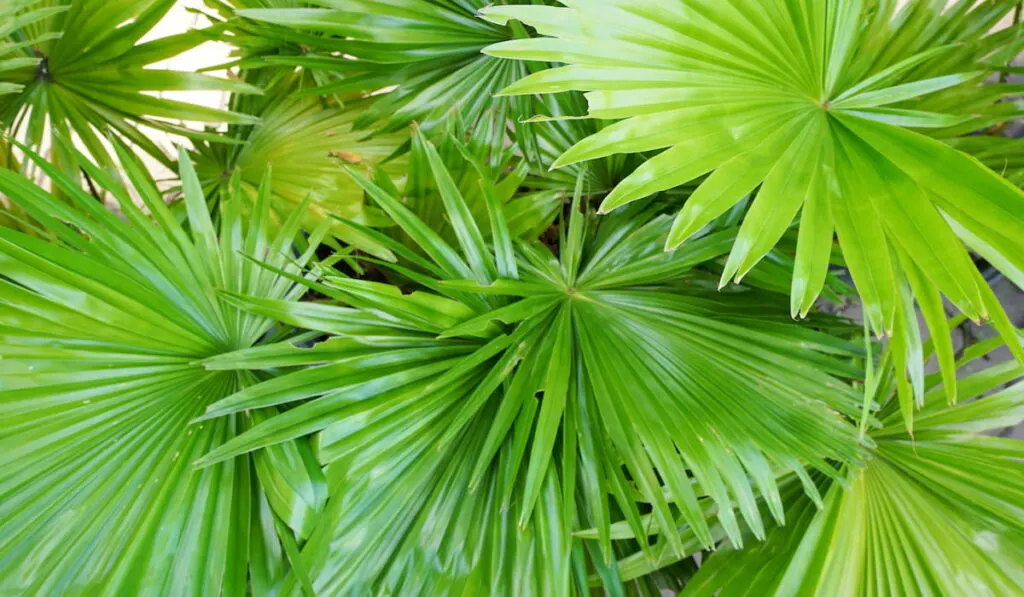
Famous in Florida and certain areas of South Carolina, the palmetto palm tree is native to the United States. In fact, the palmetto palm is so common and beloved that it is the official tree of both states.
You’ll see them growing in the wild or perfectly manicured at resorts in the region. They grow very tall, with spiky leaves that look a bit like fans. You can find some of these trees as tall as 65 ft.
The Mexican Palm Tree
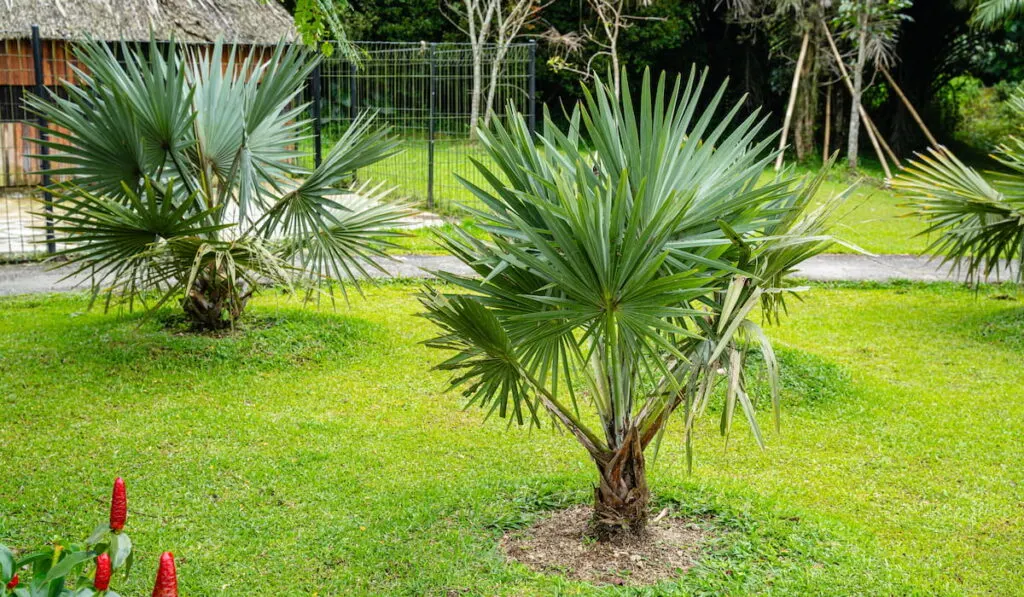
Known for its tall, narrow trunk, the Mexican palm is one of the most famous palm trees because of its distinct look. This tree has such a narrow trunk and bushy collection of leaves at the top that people from all over the world import them to install on high-end properties.
While this type of palm tree does grow dates, they aren’t especially delicious like dates on other date-producing palms.
Chilean Wine Palm
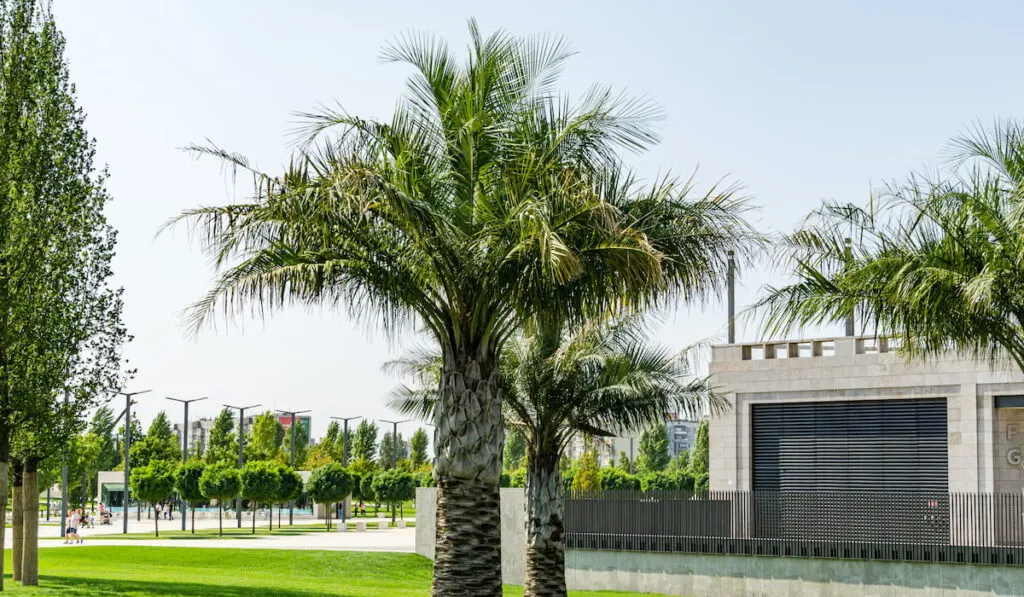
The Chilean wine palm is also referred to as the Jubaea chilensis. It’s a very good palm tree for dry climates. People who have to deal with droughts regularly turn to this tree to add some much-needed green in water-starved areas.
One interesting thing about this type of palm tree is that it can grow equally well indoors and outdoors, something that people who want to make a statement in a large lobby take note of.
They grow somewhat slower than other palm trees, but they grow to be quite large with a thick trunk and a nice canopy of leaves overhead.
Bamboo Palm
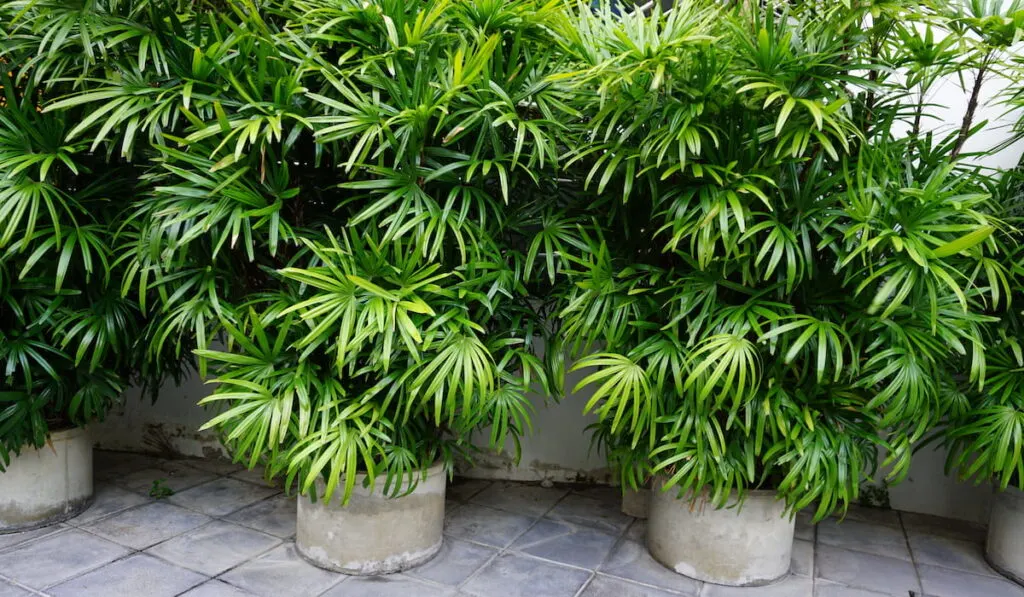
If you’re looking for something a little denser to give you some additional privacy in your yard or at an office building, then the bamboo palm is worth a look. The trunks grow closely together forming a natural wall that looks tropical but can also be grown indoors.
These aren’t separate trees but rather a set of stems that emerge from the same root system that look like smaller individual palm trees. They grow nice, long leaves on top as well.
Windmill Palm Trees
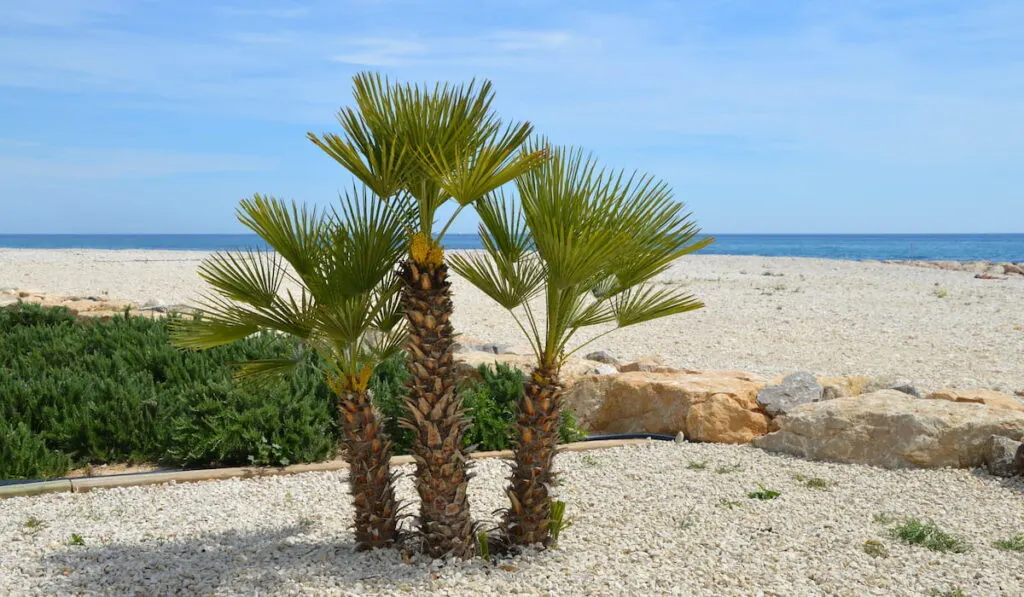
Windmill palms look like something out of a magazine. They have luscious green leaves and grow to a manageable size that makes them a fantastic choice for a backyard or to set the mood at a nice restaurant.
These trees can grow inside or outside, but they do easily suffer wind damage during strong storms. People love these trees because they look so regal and distinct, and they also require little in the way of maintenance.
The Sentry Palm
Are you looking for a type of palm tree that you can grow in a pot inside or on the patio? Then you may want to consider the sentry palm. These trees do best in bright settings where they can get a lot of direct sunlight. They only need a misting of water now and then and live for several years.
Even if you live somewhere that’s not very hot, these are still an option. They’re known for doing quite well in colder areas. With this palm tree, the main thing you need to worry about is overwatering. Some folks end up watering these small palms like they were some other common type of indoor plant and end up giving it too much.
The Triangle Palm
The triangle palm is a very popular type of palm tree because it’s small or medium in size, but its leaves grow in a very interesting shape that almost looks like a massive fan.
It gets its name ‘triangle’ for its midsection where the stems of its leaves grow in a triangle pattern. It’s generally considered one of the fancier types of palm trees, dotting hotels and airports in several countries.
Pindo Palm
These palm trees are large, but they don’t grow to be very tall. At full maturity, you can expect a pindo palm to grow to under 20 ft tall. People who want something shorter for their back garden or an entryway love these because some places limit how tall your trees can be.
The pindo is a great choice because it’s not too fussy. It can do well in the shade or full sunlight, and it thrives in many different soil types. At certain times, it will flower with white, yellow, and red blossoms, giving it a very distinct look.

Final Thoughts
Now that you know a little more about different types of palm trees, you can better choose the perfect kind of palm for your backyard or construction project.
The right tree adds a nice flavor to a property, and palm trees are fantastic because they don’t need a lot of upkeep.
Just a bit of water now and then, some pruning, and you’re all set! They do take a while to grow and produce fruit, but once they do, they’ll be a wonderful addition to any property.
